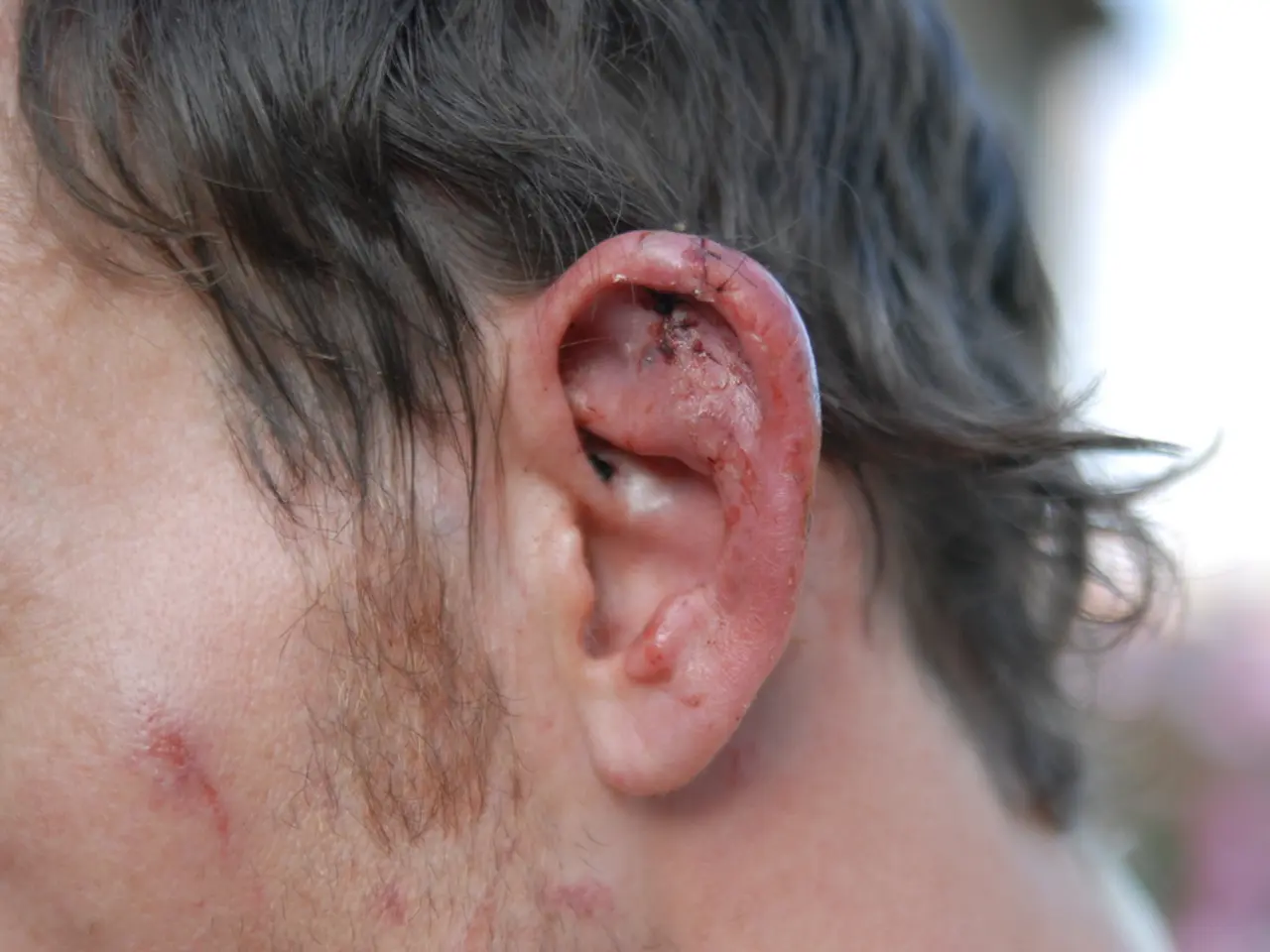Brain Hemorrhage Identification: Understanding the Aftermath of a Fall-Induced Head Injury
Brain bleeds, also known as intracranial haemorrhages, can have significant and varied long-term effects depending on their type, location, severity, and timeliness of treatment.
Intracerebral Hemorrhage
Bleeding within the brain tissue can lead to long-term disabilities, the severity of which depends on the area affected. For instance, bleeds in the basal ganglia or thalamus may cause contralateral paralysis (hemiplegia). Bleeds in the cerebellum may result in coordination problems, vertigo, vomiting, and possibly hydrocephalus (fluid buildup), which can lead to coma or a vegetative state. Brainstem hemorrhages often cause severe symptoms such as cranial nerve palsies, respiratory difficulties, coma, or persistent vegetative state due to damage to vital centers. Intraventricular hemorrhage (bleeding into brain ventricles) is linked with long-term disability in 30-50% of cases.
Subarachnoid Hemorrhage
Bleeding in the space around the brain can cause sudden severe headache, vomiting, dizziness, confusion, seizures, and loss of consciousness. Small initial bleeds may improve but carry the risk of rebleeding, which increases morbidity. Long-term effects can include limb weakness, speech difficulties, problems with walking, or coma due to stroke-related brain damage.
Traumatic Brain Injury with Bleeding
Recovery from traumatic brain injuries varies widely. Some regain normal function, while others suffer persistent issues such as cognitive impairments, behavioral changes, and physical challenges. About 30% remain dependent on assistance and only 30% return to previous employment after two years. Depression and changes in living and driving status are common.
Blood Clots and Stroke
Recovery depends heavily on age, overall health, size and location of the clot or bleed, and type of stroke (ischemic vs hemorrhagic). Hemorrhagic strokes generally have more complex recovery due to direct brain tissue damage and increased intracranial pressure. Rehabilitation, including physical, speech, and occupational therapy, is critical for regaining function and independence.
Recovery Prospects
Patients with smaller, localized bleeds and timely treatment tend to have better recovery outcomes. Older age and pre-existing health conditions worsen recovery chances. Rehabilitation is essential to address physical, cognitive, and psychological deficits. Some can recover independence in daily living, with many returning to home living; however, substantial proportions have lasting impairments affecting mobility, cognition, emotional health, and employment.
In summary, intracerebral hemorrhages and brainstem bleeds often result in severe disability or death, while subarachnoid hemorrhages have a variable prognosis influenced by the risk of rebleeding and stroke damage. Recovery from traumatic brain injuries and hemorrhagic strokes may extend over years, with many patients experiencing some persistent deficits but potential for improvement with comprehensive rehabilitation.
Younger and healthier individuals may often show more resilience and potential for improvement during the recovery process. Medical interventions such as shunt placement may be necessary to manage hydrocephalus. Recovery from a brain bleed is a gradual process, influenced by factors like the bleed's severity, its location, and the individual's age and overall health. If the brain bleed is caused by a ruptured aneurysm, there is an ongoing risk of further bleeding, leading to more severe complications. The support of friends and family is invaluable during the recovery period, contributing significantly to the overall well-being of the individual. Recognizing the severity of a brain bleed is vital, demanding prompt medical attention.
- Regardless of the severity or location, brain bleeds, like intracerebral hemorrhages, can lead to long-term disabilities and impairments.
- Depending on the severity and timeliness of treatment, a brain bleed may cause significant long-term effects, affecting not only physical health but also mental health.
- Brain bleeds can also result in neurological disorders, such as difficulties in speech, walking, or coordination.
- The support of friends and family plays a crucial role in the overall well-being of individuals recovering from brain bleeds.
- Rehabilitation, including physical, speech, and occupational therapy, is essential for addressing physical, cognitive, and psychological deficits in patients who have experienced a brain bleed.
- For individuals who have experienced a brain bleed, the risk of further complications, such as chronic diseases, cardiovascular health issues, aging, and even cancer, may increase over time.
- Fitness and exercise, as part of a comprehensive health-and-wellness regimen, can improve resilience and aid in the recovery process for those who have experienced a brain bleed.
- Science continues to unlock the potential for neuroplasticity in the brain, offering hope for individuals to overcome the challenges posed by brain bleeds and return to a fulfilling life.




